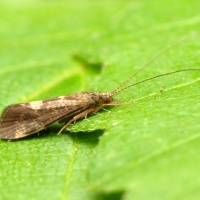Citizen science and new technology
Increasingly affordable digital camera and smart phone technology is being used to attempt to engage the public with the natural world and biodiversity conservation. Citizen science – where the public are involved as active researchers or collectors of biodiversity data – is being increasingly fostered by initiatives such as Project Noah. Project Noah allows the public to use a smart phone app to document (through photographs, measurements and map readings) the plants and animals they encounter. These “spottings” are mapped along with other user data to give a field guide to the wildlife found in a particular area, and can be ratified by independent experts. Project Noah also sets the user “missions” to spot a particular organism, and the data collected can be used to track processes such as the spread of migrating or invasive species.
This initiative is part of a larger movement to use new technologies to engage the public with the natural world. iSpot provides an online community for users to help identify photographed organisms; and projects like the OPAL Biodiversity Survey, the RSPB Big Garden Bird Watch or the Christmas Bird Count in the USA are increasingly using the internet to allow the public to submit their observations and sightings.
This reflects a shift to the increasing democratisation and openness of scientific knowledge. Historically, scientists and the public have largely existed as separate poles, with the communication of science aiming to fill a perceived “deficit” in public understanding. This “deficit model” assumes that once scientific literacy is improved then the public will understand how and why scientific decisions are made, and so avoid any controversy or debate.
However, this model is being viewed as increasingly flawed. Citizen science projects such as Project Noah fall under an alternative “public engagement” model that aims to empower the public in environmental decision-making by connecting environmental problems to their daily lives, values and beliefs. The science-public relationship becomes a dialogue, fostered through citizen science projects, community forums and novel means of science communication (see for example the BioFresh Cabinet of Freshwater Curiosities) to understand and influence how science is translated into environmental decision-making.
There are concerns that the data collected by citizen science projects is unreliable and inaccurate. Certainly, a browse through the Project Noah site reveals a number of “spottings” of pets, garden plants and fishermen’s trophy catches. However, you could argue that the quality of data is necessarily the key point to citizen science; it is instead the fact that it encourages people who may not otherwise to step outside and take notice of the natural world around them – even in a highly urban area.
As such – and seemingly paradoxically – I wonder if there is the potential for new digital technology to make it easier for the public to reconnect with the natural world? How would such a connection work? Do new technologies necessarily keep us at arms length from the world around us, or do they give new ways to reinvigorate our engagement and enjoyment of it?
As ever, let us know your thoughts, comments and suggestions.















